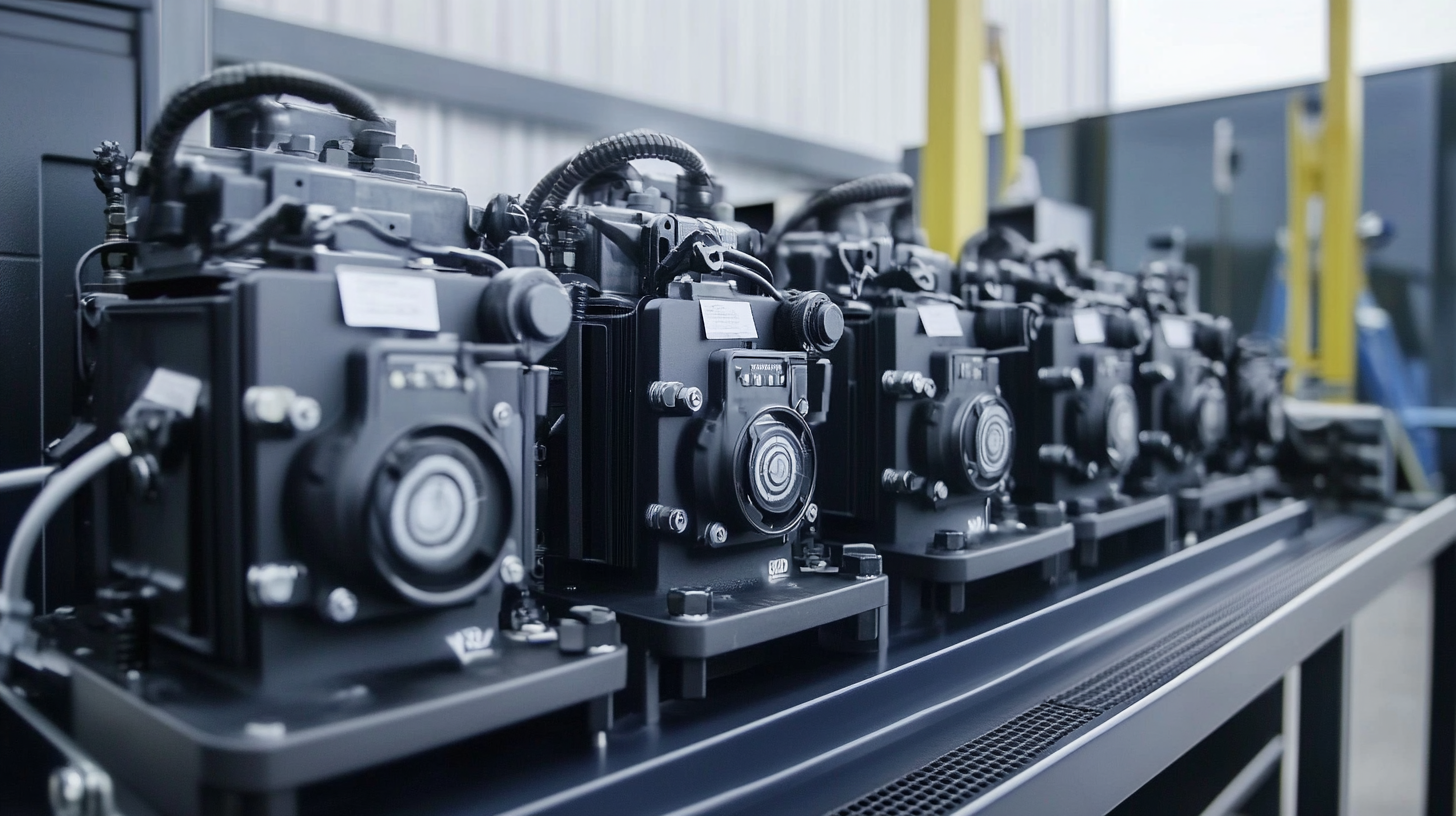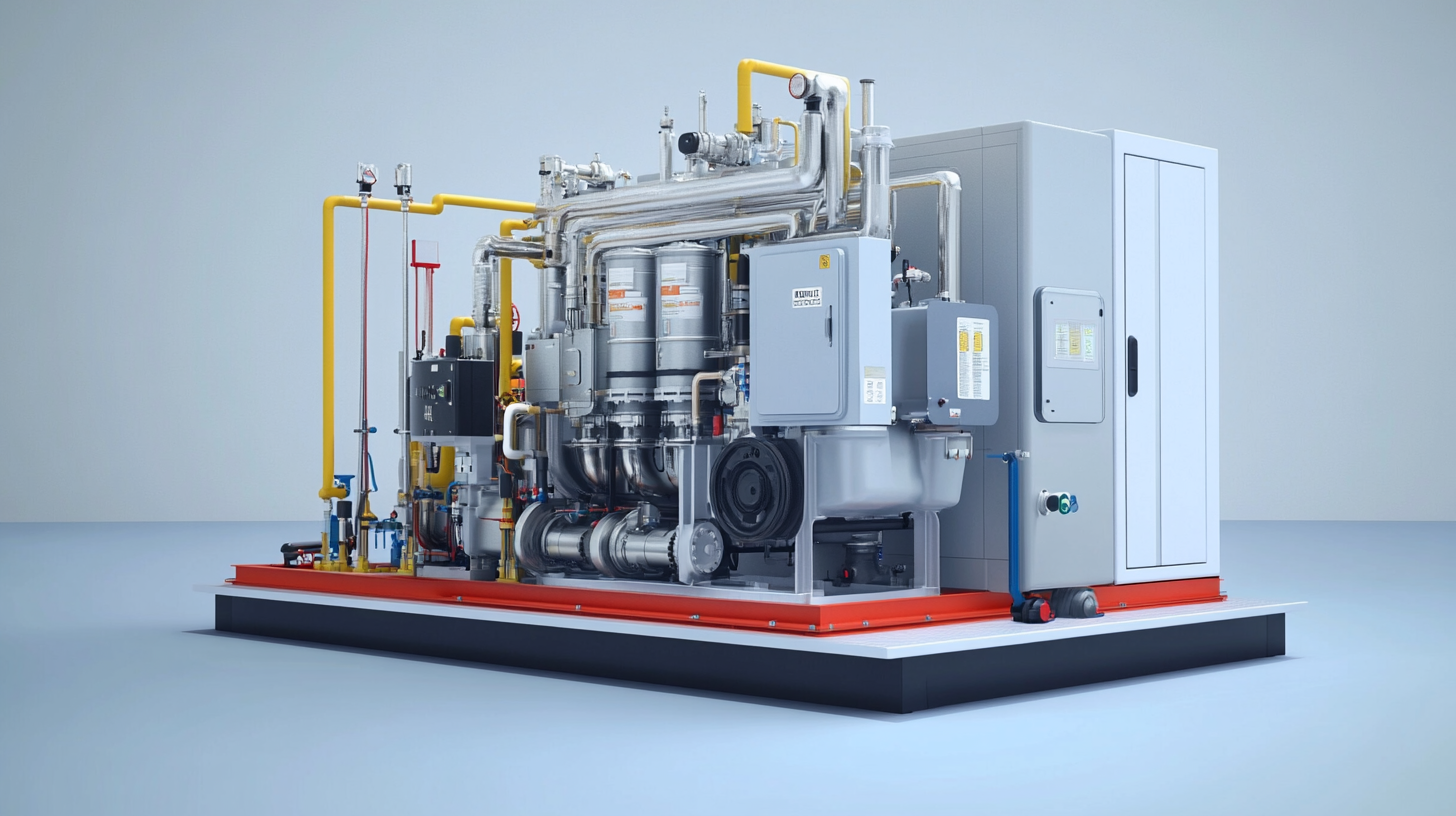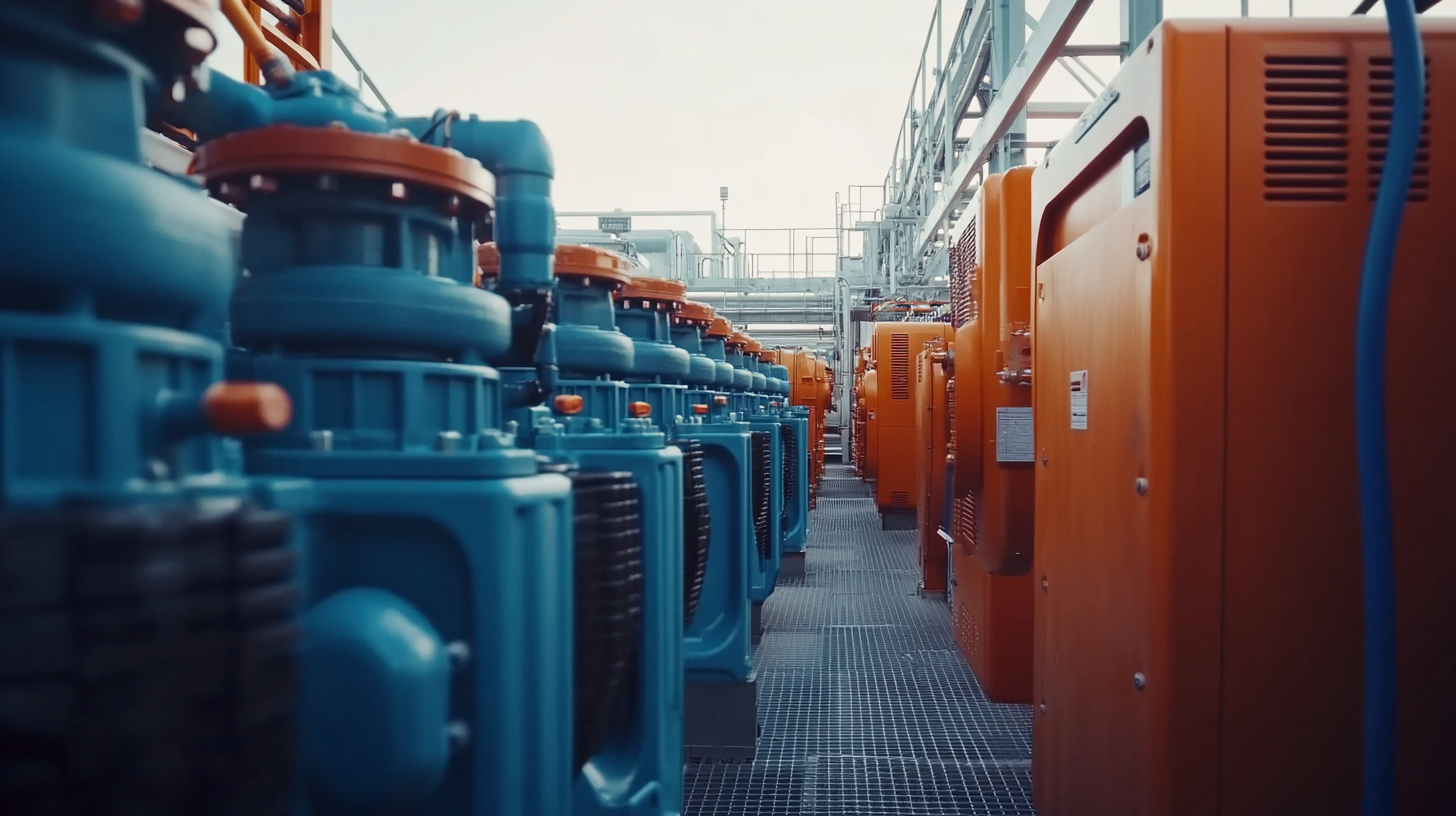International Fluid Power Inc.
International Fluid Power - Innovative Partners For Global Sourcing Of Fluid Power Products. Your Complete Hydraulic Source in SE Minnesota.
INTERNATIONAL FLUID POWER, INC.
2025 Trends in Hydraulic Power Units: How to Optimize Your Supply Chain for Global Procurement Success
In the rapidly evolving landscape of industrial machinery, the significance of Hydraulic Power Units (HPUs) cannot be overstated. According to the latest report from MarketsandMarkets, the global hydraulic power unit market is projected to reach USD 4.5 billion by 2025, growing at a compound annual growth rate (CAGR) of 4.8%. This growth underscores the critical role HPUs play in enhancing the efficiency and productivity of various applications, from construction to manufacturing. As industries aim for greater automation and sustainability, the need for advanced hydraulic systems becomes even more pronounced, prompting companies to reassess their procurement strategies and supply chain management.
Furthermore, optimizing the supply chain for Hydraulic Power Units is not just a matter of securing the best prices, but also ensuring quality, reliability, and timely delivery. A study by Allied Market Research highlights that efficient supply chain management can reduce operational costs by up to 30%, a compelling incentive for companies operating in competitive markets. As we look towards 2025, organizations must adapt to these trends by leveraging innovative procurement solutions and fostering strategic partnerships, ultimately paving the way for success in a globalized market.

Emerging Technologies Shaping Hydraulic Power Units in 2025
As we approach 2025, the landscape of hydraulic power units (HPUs) is being profoundly shaped by emerging technologies that promise to enhance efficiency and reliability. According to a recent report by Research and Markets, the global hydraulic equipment market is projected to reach $50 billion by 2025, driven by innovations in automation and digitization. This shift is not only making hydraulic systems smarter but also more adaptable to diverse industrial applications. One of the key trends influencing HPUs is the integration of the Internet of Things (IoT). By embedding sensors in hydraulic systems, manufacturers can monitor performance and maintenance needs in real-time, significantly reducing downtime and operational costs. A McKinsey study estimates that predictive maintenance can cut maintenance costs by up to 30%, showcasing the financial benefits of these technologies. Another critical area is the advancement of telematics in hydraulic machinery. With the ability to gather and analyze data from equipment, companies can optimize their supply chain management by gaining insights into usage patterns and performance metrics. This technology has been shown to improve efficiency by approximately 20%, allowing companies to align their procurement strategies with actual operational needs rather than relying on historical data alone. Moreover, innovations in materials science, such as the development of lightweight and more durable hydraulic fluids, are set to redefine the performance boundaries of HPUs. The adoption of these advanced materials can lead to significant energy savings, as highlighted by a 2021 study from the International Energy Agency, which reported that energy-efficient hydraulic systems could reduce overall energy consumption by 15-25%. As we advance towards 2025, these emerging technologies will not only enhance the functionality of hydraulic power units but also shape the entire supply chain landscape in the manufacturing sector.

Key Factors Influencing Global Procurement Strategies for Hydraulic Units
In 2025, global procurement strategies for hydraulic power units will be profoundly influenced by several key factors that reflect the evolving market dynamics and regulatory landscapes. One such factor is the increasing emphasis on sustainability and environmentally friendly practices. As industries worldwide strive to meet stricter environmental regulations and consumer demands for greener alternatives, procurement strategies will need to adapt by prioritizing suppliers who offer sustainable hydraulic solutions.
Additionally, geopolitical tensions and trade policies will play a crucial role in shaping procurement approaches. Recent discussions regarding national security related to steel imports underscore the importance of reevaluating supply chains to mitigate risks associated with international trade barriers. Companies must remain vigilant and flexible to navigate these complexities while ensuring a consistent supply of quality hydraulic power units.
Moreover, advancements in technology will facilitate smarter procurement practices. The integration of data analytics and artificial intelligence into procurement processes will empower organizations to forecast demand more accurately and optimize their sourcing strategies. As businesses worldwide become more interconnected, leveraging technology to analyze market trends and supplier performance will be essential for achieving procurement success in the competitive hydraulic units market.

Best Practices for Supply Chain Optimization in the Hydraulic Industry
As the hydraulic industry anticipates significant growth, optimizing supply chains is becoming crucial for maintaining competitiveness and achieving procurement success. Best practices in supply chain optimization can significantly enhance efficiency, reduce costs, and improve the responsiveness of operations. In particular, adopting advanced data analytics is essential in identifying trends and forecasting demand, allowing companies to make informed decisions in a rapidly changing market.
Leveraging frameworks like the POLCA system can streamline operations by managing workflow more effectively, which is particularly important in environments characterized by high variability. This approach helps in balancing the production schedules with actual demand, reducing lead times, and minimizing inventory costs. Moreover, implementing multi-objective optimization models can assist companies in making informed choices regarding resource allocation, especially when faced with the challenge of managing wastewater from hydraulic fracturing operations.
Additionally, emerging technologies such as automation and IoT can provide real-time insights into supply chain performance, enabling companies in the hydraulic power unit sector to respond swiftly to disruptions. Adopting these best practices not only promotes sustainability in operations but also positions firms to capitalize on the anticipated growth within the global metal tank market, projected to reach USD 14.3 billion by 2032.

Assessing Risks and Opportunities in Global Sourcing of Hydraulic Power Units
In the rapidly evolving landscape of hydraulic power units, optimizing the supply chain for global procurement is more crucial than ever. One of the primary areas that necessitates careful consideration is the evaluation of risks and opportunities in global sourcing. A recent report indicates that the transition to spot markets for electricity is reshaping how producers and consumers interact, highlighting a critical need for hydraulic power unit suppliers to adapt to this new economic landscape. The shift from pre-bid markets to dynamic spot transactions requires a strategic approach to sourcing, particularly as industry players seek to mitigate risks associated with fluctuating prices and supply chain uncertainties.
Environmental impacts also form a significant consideration in global sourcing strategies. While natural gas is often viewed as a cleaner alternative to coal and oil, its emissions are still considerably higher than those from renewable sources like wind and solar. As industries increasingly pivot towards sustainability, hydraulic power units must align with cleaner energy strategies. This alignment presents both risks and opportunities, compelling suppliers to innovate in their offerings while remaining aware of the broader regulatory environment and consumer preferences for low-emission solutions.
As procurement teams assess the global landscape, utilizing data analytics to simulate hydraulic power matching can play a pivotal role in decision-making. Recent simulations evaluating risk and economic factors among cascade hydropower stations highlight the importance of understanding operational efficiency and market conditions. By leveraging such insights, companies can strengthen their sourcing strategies, ensuring they are not only responsive to current trends but also prepared for the future shifts in the energy market.
Future-Proofing Your Supply Chain: Trends to Watch in Hydraulic Procurement
In the evolving landscape of hydraulic power units, optimizing the supply chain for global procurement success is becoming increasingly paramount. The latest insights from the February 2025 report on the aviation supply chain reveal that over a thousand companies in the airborne equipment and systems manufacturing sector are actively engaging in these procurement challenges. It is crucial to adapt strategies in light of these statistics.
One key trend identified is the importance of data-driven decision-making. The 2024 September report highlights that companies leveraging data analytics can enhance supply chain efficiency by up to 30%. By integrating advanced analytics into hydraulic procurement, businesses can forecast demand more accurately, mitigate risks associated with fluctuating supply, and streamline operations.
Another noteworthy aspect pertains to sustainability initiatives within the supply chain. Current industry trends indicate that 70% of procurement leaders prioritize sustainable sourcing practices. This shift not only meets regulatory requirements but also aligns with the increasing consumer demand for eco-friendly products. As hydraulic power units play a significant role in various applications, implementing sustainable practices can enhance brand reputation and drive long-term growth in this sector.
Being cognizant of these trends while strategically aligning procurement approaches can significantly contribute to future-proofing supply chains in the hydraulic power unit industry.
You Can Find International Fluid Power Here:
Search For:
Footer #4 Widget
This is an example of a widget area that you can place text to describe a product or service. You can also use other WordPress widgets such as recent posts, recent comments, a tag cloud or more.
© 2025 International Fluid Power, Inc. All Right Reserved.
